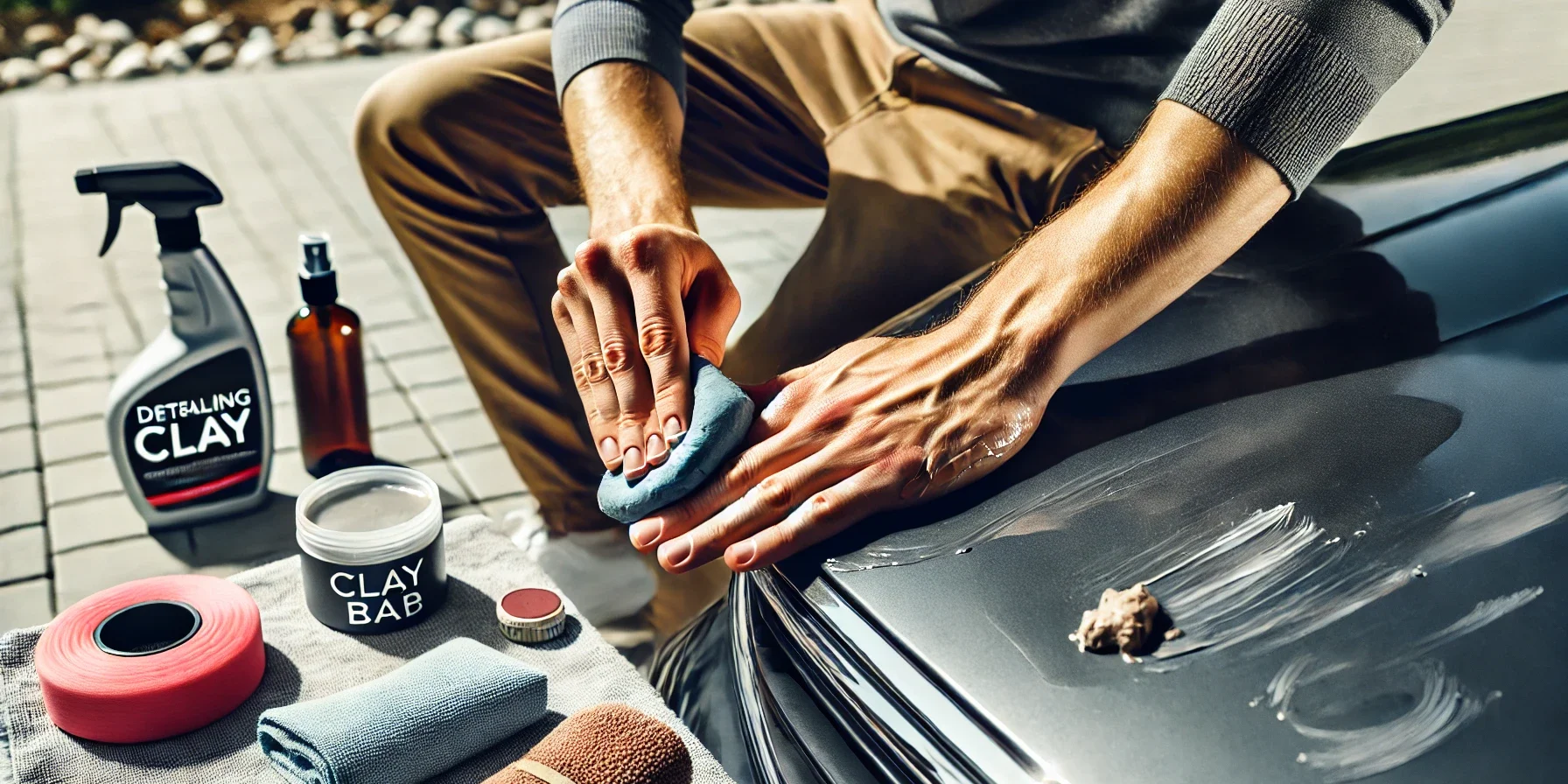Clay Bar Detailing: Reviving Your Car’s Paint to Showroom Shine
If you’ve recently purchased a used car with less-than-perfect paintwork, don’t despair. There’s a solution that can restore your vehicle’s finish to its former glory: clay bar detailing. In this comprehensive guide, we’ll explore the ins and outs of using a clay bar, a technique that can transform your car’s appearance and prepare it for further detailing steps.
Understanding Clay Bar Technology
What is a Clay Bar and How Does It Work?
A clay bar is a engineered resin compound that feels similar to modeling clay or plasticine. It’s malleable, allowing you to shape and reshape it as needed. The science behind clay bars is fascinating:
- Surface Attraction: The clay bar’s unique composition allows it to grab and lift contaminants that have bonded to your car’s paint.
- Microscopic Abrasion: As you glide the clay across the surface, it gently abrades the contaminants, removing them without damaging the clear coat.
- Contaminant Absorption: The removed particles become embedded in the clay, effectively cleaning your paint’s surface.
Types of Contaminants Removed:
- Industrial fallout
- Brake dust
- Tree sap
- Tar spots
- Overspray
- Embedded dirt particles
The Clay Bar Process: Step-by-Step Guide
Preparation is Key
Before you begin clay bar detailing, ensure your car is thoroughly washed and dried. Clay bars are designed to remove bonded contaminants, not surface dirt.
Step 1: Choose Your Clay and Lubricant
Select a clay bar appropriate for your car’s condition. For most vehicles, a medium-grade clay is suitable. You’ll also need a clay lubricant. While some kits come with a specialized solution, you can use a diluted car shampoo or even distilled water in a pinch.
Step 2: Prepare Your Work Area
Work in a shaded area to prevent the lubricant from drying too quickly. Divide your car into sections (e.g., hood, roof, doors) to ensure thorough coverage.
Step 3: Knead the Clay
Warm up the clay by kneading it in your hands. This makes it more pliable and ensures a clean surface for each use.
Step 4: Lubricate the Surface
Spray a generous amount of lubricant on the section you’re working on. This is crucial to prevent the clay from sticking to the paint and potentially causing scratches.
Step 5: Glide the Clay
Using light to medium pressure, glide the clay back and forth across the lubricated surface. You may feel or hear a slight grittiness – this is normal and indicates the clay is picking up contaminants.
Step 6: Check Your Progress
Wipe the area with a microfiber towel and feel the surface. It should be smooth as glass. If not, re-clay the area.
Step 7: Reshape the Clay
Regularly check the clay for visible contamination. When dirty, fold it over and re-knead to expose a clean surface.
Step 8: Repeat
Continue this process over the entire vehicle, re-lubricating as necessary.
Advanced Tips for Clay Bar Detailing
- Start with Less Aggressive Methods: If your car’s paint isn’t heavily contaminated, try a fine-grade clay or even a synthetic clay cloth first.
- Don’t Rush: Take your time, especially on your first attempt. Rushing can lead to missed spots or potential damage.
- Be Cautious Around Edges: Pay extra attention around badges, trim, and other protruding elements to avoid catching the clay.
- Consider a Two-Step Process: For heavily contaminated vehicles, start with a more aggressive clay, then follow up with a finer grade for the best finish.
- Follow Up with Protection: After claying, your paint is pristine but vulnerable. Always follow up with a polish and wax or sealant.
Common Mistakes to Avoid
- Using a Clay Bar on a Dirty Car: Always wash and dry your vehicle thoroughly before claying.
- Claying Without Lubricant: This can cause severe marring of your paint.
- Reusing Dropped Clay: If you drop your clay bar, discard it. It’s not worth risking scratches from picked-up debris.
- Claying in Direct Sunlight: This can cause the lubricant to dry too quickly, increasing the risk of marring.
- Over-Claying: While clay bars are generally safe, excessive use can eventually thin your clear coat.
Environmental Considerations
As car enthusiasts, we should always consider the environmental impact of our detailing practices:
- Choose biodegradable clay bars when available.
- Dispose of used clay bars properly – they can’t be recycled.
- Use eco-friendly lubricants or opt for distilled water to reduce chemical use.
Conclusion
Clay bar detailing is a powerful technique in any car enthusiast’s arsenal. When done correctly, it can dramatically improve your car’s paint finish, preparing it for further detailing steps like polishing and waxing. Remember, the key to successful clay bar use is patience, proper technique, and the right products. With practice, you’ll be able to achieve professional-level results, bringing your car’s paint back to showroom quality.
By incorporating clay bar detailing into your car care routine, you’re not just cleaning your vehicle – you’re preserving its finish and potentially its value. Whether you’re prepping for a car show or simply want to enjoy a flawless finish on your daily driver, mastering the art of clay bar detailing is a skill that will serve you well in your automotive journey.







